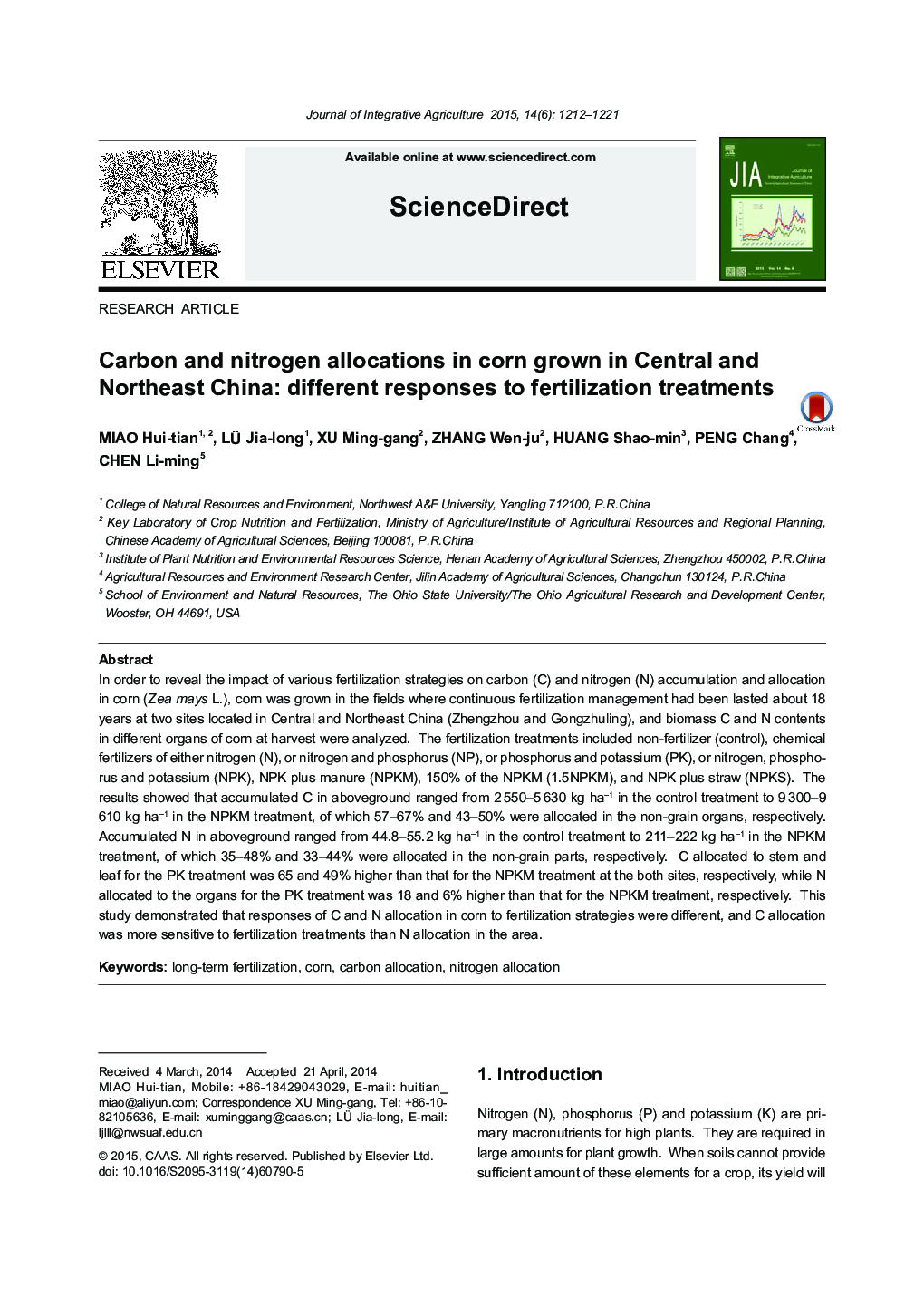| Article ID | Journal | Published Year | Pages | File Type |
|---|---|---|---|---|
| 4494177 | Journal of Integrative Agriculture | 2015 | 10 Pages |
In order to reveal the impact of various fertilization strategies on carbon (C) and nitrogen (N) accumulation and allocation in corn (Zea mays L.), corn was grown in the fields where continuous fertilization management had been lasted about 18 years at two sites located in Central and Northeast China (Zhengzhou and Gongzhuling), and biomass C and N contents in different organs of corn at harvest were analyzed. The fertilization treatments included non-fertilizer (control), chemical fertilizers of either nitrogen (N), or nitrogen and phosphorus (NP), or phosphorus and potassium (PK), or nitrogen, phosphorus and potassium (NPK), NPK plus manure (NPKM), 150% of the NPKM (1.5NPKM), and NPK plus straw (NPKS). The results showed that accumulated C in aboveground ranged from 2 550–5 630 kg ha−1 in the control treatment to 9 300–9 610 kg ha−1 in the NPKM treatment, of which 57–67% and 43–50% were allocated in the non-grain organs, respectively. Accumulated N in aboveground ranged from 44.8–55.2 kg ha–1 in the control treatment to 211–222 kg ha−1 in the NPKM treatment, of which 35–48% and 33–44% were allocated in the non-grain parts, respectively. C allocated to stem and leaf for the PK treatment was 65 and 49% higher than that for the NPKM treatment at the both sites, respectively, while N allocated to the organs for the PK treatment was 18 and 6% higher than that for the NPKM treatment, respectively. This study demonstrated that responses of C and N allocation in corn to fertilization strategies were different, and C allocation was more sensitive to fertilization treatments than N allocation in the area.
